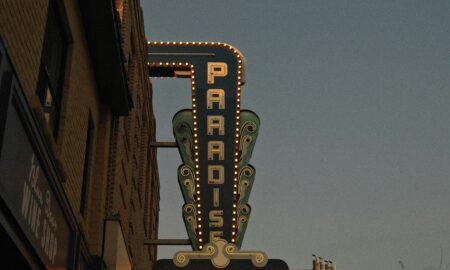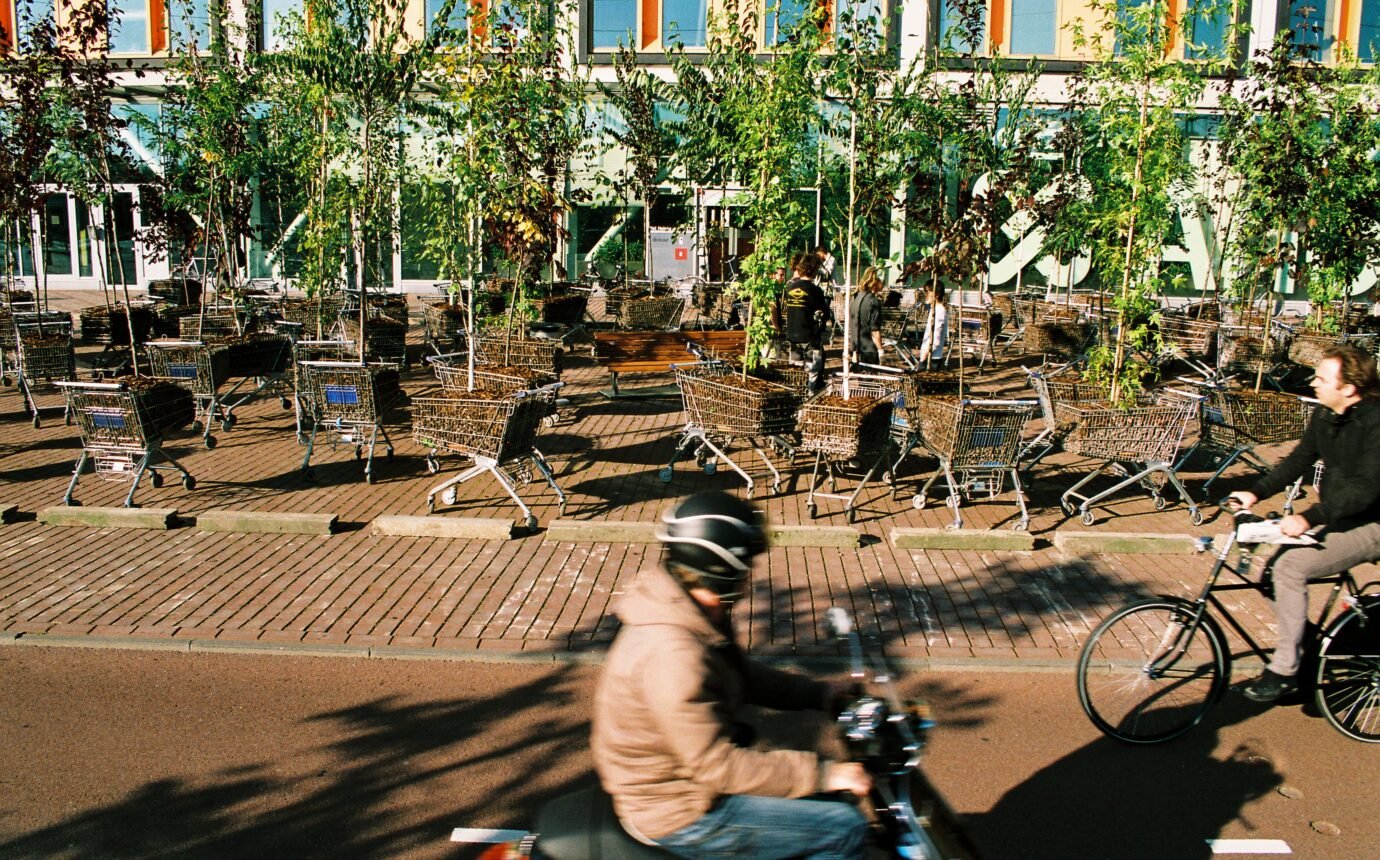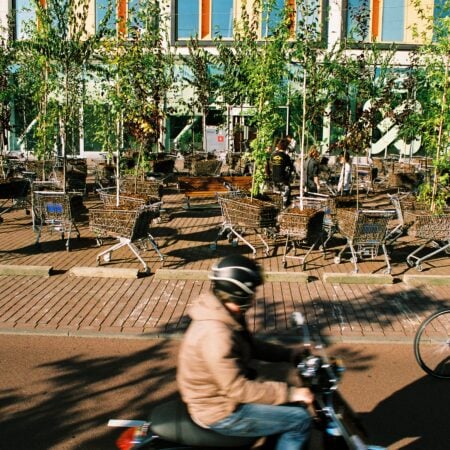All Culture Is Niche Culture—Even the Movies


Now five years old, the Paradise Theatre seems less like a quirky Toronto anomaly and more like the future of cinema
If you were writing a history of film as a popular art form, your story might begin and end with a pandemic. In the 1910s, cinemas were mom-and-pop businesses, independently owned and beholden to local clientele. Then came the Spanish flu and the government lockdown orders, which drove cinemas into insolvency, enabling Adolph Zukor, of the Famous Players–Lasky Corporation (later Paramount Pictures) to buy them up on the cheap. Zukor’s machinations gave birth to the Hollywood studio system—whereby the companies that made the movies also distributed and screened them—which lasted until a landmark anti-trust suit in 1948.
Even after the studios were broken up, movie theatres remained big businesses. Was the Cineplex at the Toronto Eaton Centre (which opened in 1979) the world’s first multiplex? It was the first movie house with 18 screens. It was hardly the last. In key respects, the multiplex model that reigned supreme from the 1980s to the 2010s resembled the studio system it supplanted. Movies were still screened by large corporations, who negotiated with studios to establish regional monopolies on first-run distribution. Small local theatres—what was left them, anyway—got second dibs.
All of that is changing again. The multiplexes aren’t gone but neither are they the mega-profitable businesses they used to be. Their diminishment is part-and-parcel with the decline of movies generally. Yes, films still get made, but they’re no longer the unifying cultural forces they once were. They compete for attention with short-form videos and long-arc TV. Homebody culture was already in full swing in the late 2010s, but Covid tipped it into overdrive. We now stream movies on the same personalized screens that we stream everything else on, while the megaplexes sit mostly empty, except on occasion, when a Dune– or Wicked-esque spectacle briefly drives up ticket sales.
The decline of the corporate multiplex helps explain the resurgence of the local community theatre. “All culture is niche culture now,” says Lucy Walker, lead programmer at the Paradise Theatre, an old Deco cinema that reopened in late 2019, after financier Moray Tawse bought the abandoned property and commissioned a restoration. What will the future of filmgoing look like? Imagine a subculture—vibrant, if less globally relevant—that’s dominated not by casual fans but rather by cognoscenti with a deep sense of history. In short, imagine the Paradise.
In Toronto, there’s nothing else like it…yet. The Paradise is more intimate and soulful than the megaplexes but swankier than the typical second-run movie house. Its goal, says Walker, is to “eventize” the movies. If you’re going to ask people to pay between $13 and $19 to do something they could do for free at home, she reasons, you need to make the expense worth their while. You need, that is, to give them a night out, one that comes with a dose of novelty.
In this respect, the Paradise’s peers are places like Vidiots, in Los Angeles, which sits adjacent to a newly re-opened DVD shop; Metrograph, in New York, which has its own bespoke typeface; and the Roxy Cinema, also in New York City, which exudes Old Vegas charm, with its plush seating and patterned carpets. The design of the Paradise reflects its Deco history. Heritage firm ERA Architects reappointed the exterior brickwork and had the original marquee sign rebuilt. Local shop Solid Design Creative envisioned the lobby bar as an island bounded by curvilinear steel railings and set against a scalloped wall.
More than five years after the Paradise re-opened, the design program is finally complete, thanks to the incorporation of Piano Piano Bloor, the most recent edition to chef Victor Barry’s local dining empire. The restaurant comprises two floors along the eastern side of the building. “The space is so narrow,” says Ali McQuaid, founder of design firm Futurestudio, responsible for the interiors, “that when I first visited the site I felt like I was walking into a train car.”
In preparation for the job, McQuaid studied images of the Orient Express to understand how the luxury rail service makes elegant use of limited space, mostly via narrow banquettes, running lengthwise against the walls. Soon, McQuaid was imitating other design motifs from the train: animal print, upholstered dining chairs and tasseled drapery. “We leaned into theatricality,” she says.
She leaned into nostalgia too. Really, the entire enterprise–including the new class of bespoke theatres in Toronto and elsewhere–is nostalgic. The goal is to create a future for movies by recuperating what’s best about the past. The project is one of cultural preservation. By envisioning a night at the movies as an event, the Paradise is trying to bracket cinema off from the other slop we imbibe on our phones, to show that it deserves pride-of-place in the culture.
The programming at the Paradise Theatre, and at its New York and Los Angeles counterparts, mostly features films from the past. This is a business decision: the megaplexes still have first-run monopolies on new films, and second-run screenings must now compete with streamers. Yet, by running older films, these cinemas are also recalling a time when the movie theatre wasn’t primarily the domain of CGI-driven spectacles, when the full range of human emotions—heartbreak, guilt, neuroticism, ennui—received big-screen treatment.
Walker thinks creatively about what counts as a theatre-worthy film. She is currently programming a Mel Brooks retrospective. “People need the experience of laughing together,” she says. Her favourite program was a run earlier this year of human-scale epics, films that are expansive in length and ambition but fixated on small moments in their characters’ lives.
One of these movies, Kenneth Lonergan’s Margaret, focuses on a few weeks in the life of its protagonist, a teenager played by Anna Paquin, navigating a rocky relationship with her mother, a crush on her math teacher, and the aftermath of a deadly bus accident that she witnessed—and maybe helped cause. The thrill of the film lies in its sharp, acerbic dialogue, which tracks profound changes in the characters’ internal states. If an experience like that doesn’t seem thrilling to you or worthy of your sustained attention, then don’t go to the Paradise. Most other Torontonians won’t go either. Or better yet, do go. You need it most of all.































